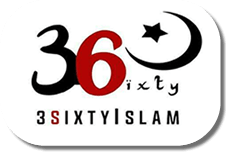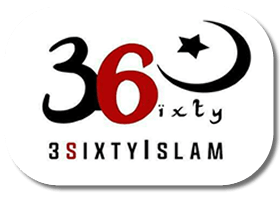HISTORY OF TRANSLATION OF THE HOLY QUR’AN INTO YORUBA LANGUAGE
BY OYEWUNMI KAFAYAT OLASEYI
The first known translation of the Holy Qur’an into any African language was written by Reverend Micheal Samuel Cole, popularly called M.S. COLE, in 1906.
At the turn of the century, missionaries in Nigeria took the lead in translating the Holy Quran into the Yoruba language. Yoruba, one of the major languages of Nigeria, is spoken by more than sixteen million people in the southern part of Nigeria. Since approximately half of the Yorubas are Muslims, the conversion of Muslims to Christianity became one of the focal points of the missionaries who started translating and publishing religious works specifically meant for Muslims.
In addition to producing Christian works both in Arabic and Yoruba, they also published works on Islam like Itan Momodu, (history of the Prophet Mohammed). The most significant and notable publication, however, was the Yoruba translation of the Holy Quran by the Reverend (later Canon) M.S. Cole, who undertook the task of translation at the suggestion of a few members of Holy Trinity Church, Ebute Ero, the first missionary church in Lagos, when he was a lay agent of the Lagos Native Pastoral there.
They believed that it would help the cause of Christianity, and dispel the darkness of the ignorance that prevails among those who believe in the word of the Prophet Mohammed in Yorubaland and they would be in a position to compare the Bible with the Quran and see which satisfies best the needs of humanity.
Then, Reverend Cole embarked upon the work of translation towards the close of 1902, disclaiming any in-depth knowledge of Arabic literature and related fields of study and completed the task in July 1906. The work, published in Lagos but printed by Samuel E. Richards, Nottingham, England, has 452 numbers, 19 preliminaries, and 2 unnumbered pages. The translation is in colloquial Yoruba in Roman script. The chapters and verses are numbered, and an index is added. Since the chosen aim of the translator was to combat what he conceived as the error of faith in Islam, he went on to make a number of erroneous and prejudices assertions.
He wrongly asserted, for example, that the Holy Prophet Muhammad does not realize the guilt of sin and the existence of external moral law.
Consequently, the translation found very little favour with those for whom it was meant and, according to the missionaries, the Yoruba translation of the Quran circulated fast among Yoruba descendants. In 1924, it was republished in Lagos state.
Due to the controversy of how the Quran was published and its aim make some Muslims give a second thought about it, that is what prompted the Sarduana of Sokoto (Sir Ahmadu Bello), then the prime minister of Northern Nigerian, to move the motion for the first time to Mecca to an organization called Muslim World League (THE MUSLIM WORLD ULAMA) in Saudi Arabia, where he was a member at the time.
“At the meeting, he stated that the Quran, which those he represents are reading, was written by a reverend, and they are not cooperating,” he said, The Muslim World League agreed to assist them if the Yoruba Muslims could write the translation of the Quran on their own.
Bello reported back to Nigeria about the meeting held in Saudi Arabia. Three elderly volunteered to begin the movement. They formed the first committee of Muslim Yoruba men to write the translation of the Quran in Yoruba language (Sheikh Hassan Yusak Bengori, Sheikh Muhammed Awwal Ogostosol (Imam Agusto), Alhaji Sheikh Ahamad Thijanni Akanni), all Lagosians, They, started the movement in 1962 under the supervision of the two (2) representatives sent from Saudi Arabia.
Sir Ahmadu Bello, who brought an ideal and Arabian man named (Al uttaz Kamilu Sherriff) to Nigeria in 1962, and also the then Jordan’s ambassador to Nigeria; were both appointed.
The two of them supervised the work done by a committee of three. During this period, around 1965 (REV E.K. Akinlade), he published the second Quran translation into Yoruba languages, reviewing the work of M.S Cole in 1906.
In addition, the Ahmadiyya Mission attempted a second translation of the Holy Quran into Yoruba. The Ahmadiyya Mission was introduced into Nigeria in 1912 and very quickly gained followers in the Yoruba region. The Ahmadiyya are known for missionary activities that imitates the style of Christian missionary groups.
Like Christian missionaries, Ahmadiyya Missions all over the world distribute books and tracts on their beliefs and principles. And, throughout the history of their missionary efforts, one of their projects has been the translation of the Holy Quran into various major languages.
The Ahmadiyya translation of the Holy Quran into Yoruba was part of a master plan chalked out by their leader, (Mirza Bashirud-Din Mahmud, at QadiBn). Although the Ahmadiyya Mission in Nigeria had set up a committee in I934 to consider such a translation, it was not until 1957 that the first portion of the Yoruba translation-the work of (Alhaji H.O. Sanyaolu) was completed and published. The second edition, which included Suras al-Fatiha and al-Baqara, was published in Lagos in 1969, with 24 chapters in parallel columns of the original Arabic and the Yoruba translation.
In a forward to the edition, the Moulavi Fazl Ilahi Anwari, amir and missionary in charge of the Ahmadiyya Mission, wrote that the remainder of the translation was nearing completion. The publication of the first chapter of the Holy Quran aroused people’s interest and many soon asked for a translation of the remaining parts. As a result, a committee (consisting of Alhaji B.B. Balogun, A.J.J. Baba, A.R.A. Oluwa, Alhaji R.A. Busari, Alhaji S.D.A. Ahmad, S.G. Rufai, G.A. Amuda, A.L. Yusuf, and J.A. Raji) was entrusted with the responsibility of translating the entire Quran into the Yoruba language.
After about seven (7) years’ work, the committee completed the translation, which was first published in 1976 by the University Press Ibadan. The publication was so well received that it was sold out within one-and-a-half years. In 1978, the second edition of 5,000 copies, with some corrections and modifications and with improved binding, was published. It was printed in Hong Kong and became so popular that it was out of print within a year, and due to its high demand, it was sold at double or even triple the price. As a result, 5,000 copies of the third edition, which contained 779 pages with an index and was printed by Hing Lin Offset Printing Company, Hong Kong, was released in 1981. The Ahmadiyya translation of the Quran in Yoruba, like their translations in other languages, naturally contains some renderings and interpretations related directly to the positions of the Ahmadiyya and considered unacceptable by most Muslims.
In the period Ahamdiyyah was publishing their first Yoruba Translation Quran, the committee of three were still translating the Quran. It took them ten (10) years to complete it.
They started from 1962 and ended in 1972. After the work was completed, they went to give feedback on the work done to the ulama (M.W.L). They were happy about it. At this time, Sir Ahamodu Bello was late, but the other members present during the meeting were still alive. The ulmaa said they needed to give it to some people to scrutinize it. They gave the work to Yoruba descendants schooling in Saudi Arabia to cross-check the work of the committee of three.
The selected students are (ALH Abdul Lateef Adelakun, ALH Issac Bello, ALH Kadiri Mustapha, and ALH Abdul Wahab AL Sanusi).
The selected students for proofreading were sponsored by the Saudi government because the translation was done in Lebanon; it took them several months to make the necessary corrections, but the work was completed in a year in 1972. After reporting back to WML, the WML also passed the transition to a third committee. They are senior Yoruba Islamic scholars-Kamalud-deen al-Adabiyy, Burhanud-deen Sanusi Alaka, Adam Abdullahi, Abdur-Rahaman, Salahud-deen el-Adabiyy-that re-examined the entire translation and compared it with the original text.
This resulted, in January 1973, in the committee’s recommendation to proceed with the translation.
The translation appeared the same year, printed by Dar al-Arabiyya, Beirut, and published in Maiduguri.
Twenty-five thousand copies of this edition, printed at the cost of the king of Saudi Arabia, were distributed free. The first edition was exhausted within two years and a second edition was published in 1977. Another Twenty thousand copies were distributed for free.
The Saudi Arabian government sent a letter to Professor Abdul Rasaq Abdul Majeed Alaro, who was then a postgraduate student at Medina University in Saudi Arabia, on January 8, 1995 (07-Hijrah 1415), and stated that there where petitions against the Yoruba Quran, which was published by the Saudi government in 1972 and 1977, should be reviewed.
The Saudi government has now introduced a policy and association called (Judly molik). They are in charge of monitoring matters associated with the Quran. They said they will not reprint any Quran unless there is a committee that will review it from the beginning to the end. They will as well empower the committee and also the decision to print out the review copy of the holy Quran in the Yoruba Language will be based on the committee decision.
Dr Ibraheem Abdul Baki (of blessed memory) and Professor Abdul Rasaq Abdul Majeed Alaro began reviewing the Quran in Yoruba language in 1995, and it took them two years to complete the review (1995-1997).
An academy report was requested to show the corrections made in the previous Quran translation into the Yoruba language.
Before the reviewed copy was published in 1998, a letter of authorization was sent to the previous Islamic scholar who worked on the translation of the Holy Quran, signed and dated the date they approved the authorization of the newly reviewed translated Quran to be published.
Fadilat Sheikh Kalmdeen AL-Adaby signed on 28-09-1997, Alhaji Abdul Lateef Bengori signed on 26-09-1997, Alhaji Abdul Wahab Sanusi signed on 26-09-1997, on 12-09-1997
On September 11th, 1997, Alhaji Issa Bello and Alhaji Raji Mustapha signed the authorization, and on September 28th, 1997, Alhaji Musa Yayaha Ajetumobi all of them approved the review of the new translation of the Holy Quran in the Yoruba language, except for those who were late. The Saudi government went further to check on them. They are Sheikh Adam Abdullahi Allory, he died on the 3rd of April 1992, Alhaji Sheikh Ahmad Tijani died on February 29, 1993, Alhaji Imam Ogostos (Agusto) died on July 21, 1971, and Alh Buhandeen Alaka died on December 7, 1993. They were senior scholars who reviewed the Quran translation but were unable to sign the authorization for the new review copy of the Yoruba Quran.

